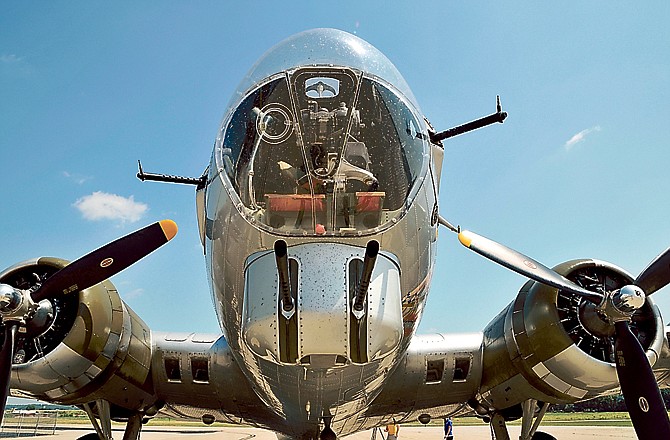The B-17 bomber has returned to Jefferson City with flights and ground tours available starting Friday.
The bomber, called "Aluminum Overcast," is the Experimental Aircraft Association's restored aircraft, visiting the Jefferson City Memorial Airport as part of the groups 2012 "Salute to Veterans" national tour.
The historic WWII-era bomber rolled off the line in May 1945, said pilot Mike Hastings. But since the war was winding down and there already were more than 12,000 B-17s in existence, it was declared surplus and sold for $450.
Now, after flying as a cargo plane, agricultural sprayer and for aerial photography, the bomber offers people a taste of what it was like to fly in WWII, though with some fairly large changes.
Aside from a lack of combat scenarios, those flying in the bomber will find it a bit more palatable than soldiers in the 40s. Hastings said the bomber would fly at 27,000 feet on average, with minus 50 degree temperatures. Much of the bomber includes open air spaces, like the radio room where a wide open hatch lets air flow freely. Hastings said the air was so thin that if a soldier took off his oxygen mask while in the air, he would lose consciousness in about three to five seconds.
"That's the incredible stuff that these guys did," Hastings said. "This is the history that people don't hear anymore ... that's why we're here, to kind of keep that alive."

